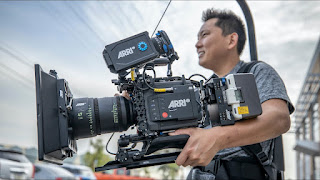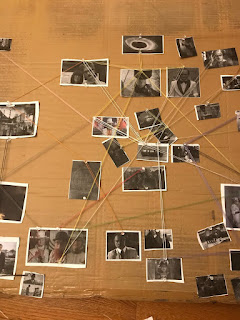Thriller- The Suspense is Killing Us!
Hi there! The next genre up on our list is none other than the chilling thriller, and if you're willing we'll tell you all about it. The thriller is the suspense without the gore, the scares without the disturbing visuals (Midsommar (2019) this is directed entirely at you), and the creep factor with the fact that you can probably still sleep after. As with before, my team and I will now be guiding you through the essentials of any good thriller and seeing what makes it work.
Camera Angles, Movement, and Shots:
In any thriller, it is the director's utmost intention that they still frighten the audience, albeit minus all of the gore that comes along with the horror genre. This can be achieved with the help of some trademarked jump scares, but any good cinematographer knows that uncomfortable camera angles and shots are the way to go.
Putting the audience in a position that they cannot escape from, much like the subject themselves is probably one of the most effective thriller techniques, which is capitalized on in the 1999 film, The Blair Witch Project, a film shot primarily from that perspective. Tracking shots might be used for the purpose of showing a character as they are stalked unknowingly, a fact that the viewers are aware of, but one that they cannot warn the subject of until it may be too late. Eye-level shots can be used to capture the subject as they peer off into the distance beyond the camera and what the audience can see, leaving viewers in the dark of what lies just out of sight, a very simple, yet still impactful shot. The usage of close-ups and extreme close-up shots make the audience keen to how the subject truly feels, poking holes in the front they may put up in front of others, whilst over-the-shoulder shots do quite the opposite, making scenes devoid of emotion like in Parasite (2019).
Dutch tilts can be used to disrupt the familiarity of a scene, skewing the perspective of the audience and heightening tensions as seen in Law Abiding Citizen (2009), as the subject lies in wait of a deadly injection. High angles remove any sense of control that a subject may have felt they had in a situation once someone or something else rises above them and asserts their dominance, as with Shutter Island (2010), where the primary subject shoves a doctor into a desk and threatens him with incriminating information. Tilting and panning were both used to the effect of creating a dramatic reveal that decompressed the pent-up tension held by the audience, techniques my partners and I have considered employing ourselves.
Sound:
Sounds in thriller films are used to set the audience on the edge of their seats, unnerving them as much the subject who is experiencing the same things in real-time. The most common dietetic sounds in such films will be the sound of screams, footsteps, whispers, sobs, and banging, which will often occur abruptly and without warning. In terms of non-diegetic sounds, the incorporation of stings created by high-pitched string instruments and piano keys do nothing but make one's skin crawl, with the pace of the music picking up when tensions run high, and said pace slowing down when the danger has subsided (or that's what the director wants you to think).
Editing:
Edits in thriller transitions can often unintentionally disrupt the tension building up in each scene, so edits are typically restricted to shot-reverse-shots in conversation, or cutaways to make a note of something in particular in another location.
Mis-Én-Scene:
Costumes and makeup in thrillers are not overly drastic, since thrillers are meant to simulate realistic events. As such, casual wear is more likely to be encountered, whilst psychiatrist attire may be used, but in more specialized versions of the genre, such as a psychological thriller.
Lighting in thrillers is typically darkened to obscure the audience's scope of view of particular scenes and create suspense.
Acting is used to enunciate a subject's descent into madness, which can be illustrated when their laugh or smile is out of place, or when their dialogue reveals their lack of credibility as a source of information. Interestingly, thrillers are more of an audience-immersive film, since clues and hints as to what is going on are sprinkled throughout inter-subject interactions, setting up a satisfying plot twist that is conducive to the rest of the storyline.
Props can include cell phones, knives, and masks, essentially anything that increase the level of relatability and realisticness for the audience as they watch along.
Thrillers are often set in familiar locations where safety is expected, but as thrillers prove, is not ensured, such as the subject's own home.
Takeaways:
The thriller genre is definitely unique, using certain conventions in alternate ways that other genres may not. As a result, my team and I particularly enjoyed the idea of using dark lighting, close-up shots, eye-level shots, and dutch tilts.
Well, I must say that researching this genre has been quite the experience, so "Look out..." (Peach Pit 2022) because our short film might just be a thriller.


Comments
Post a Comment